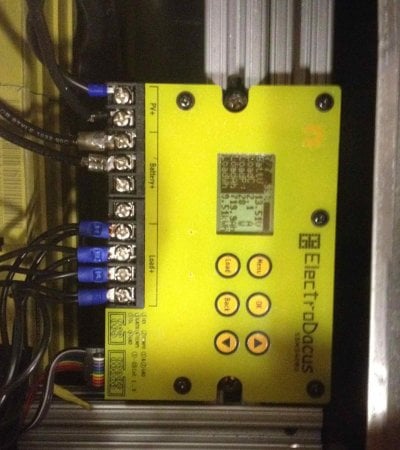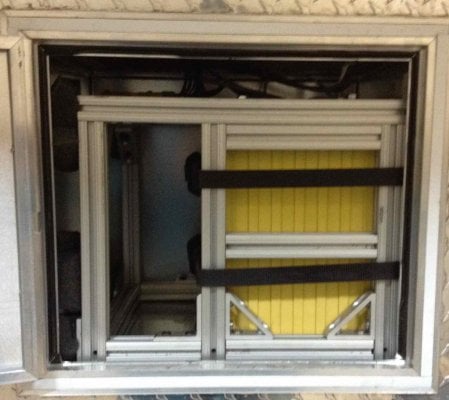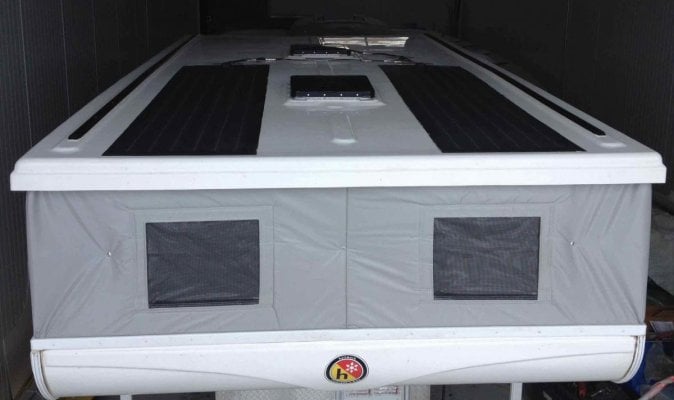enelson
Senior Member
We've recently purchased a K2 model for my Tundra. I wanted to set up a modern battery system using solar and the truck power. After a bit of research I chose lithium iron phosphate (LiFePo4) batteries. They are a safer and cheaper alternative to the lithium batteries in laptop PCs and cars like the Nissan Leaf.
LiFePo batteries are around half the weight of lead acid and can also be discharged much deeper than lead acid. I don't have the numbers off the top my head but my 160AHr batteries are similar to a 250AHr lead acid battery in terms of the amps that can be pulled out per discharge. In addition the LiFePo batteries have a life time around four times longer. This is important since the 160AHr worth of batteries set me back around $800 by the time they were delivered.
The batteries are cheapest when ordered as cells and then assembled into the 12V battery. The cells are 3.3V and four cells in series comprises the battery. It is important that the cells be "balanced" so that the voltage is very close across all cells. This balancing is accomplished through a set of cell balancing electronics. I my case, I chose and integrated charge controller, cell balancer, and battery management system (BMS). For lithium batteries there are very few integrated BMS that are designed for solar recharging. An engineer from Siemens has a hobby product that he offered through a Kickstarter campaign. The system is the Electrodacus SBMS4080. The best intro to the system is in this video.
The system can be used with 4 cells instead of the 8 cells normally used in a 24V off the grid home. If anyone happens to get there hands on a SBMS4080 I can walk them through setting it up for 4 cells.
For solar I chose the Global Solar 90W peel and stick panels. They are a good deal from the eBay seller,
http://www.ebay.com/itm/Global-Sola...att-12-Volt-Flexible-CIGS-Panel-/261358136079 These are produced in Germany so I was more assured in the manufacturing quality control than some other panels.
I made a frame for the batteries out of 1" 8020 and mounted the SBMS4080 to the frame. The BMS needs to be close to the batteries. While I don't have a remote display the access hole that Bill had built for me is enough for me to check the system whenever I want. The 160AHr of LiFePo batteries is a huge amount of power for our needs. We could easily go 3 nights without recharging and run the frig and furnace no probem. A few pics below will give a better idea of what it all looks like.


LiFePo batteries are around half the weight of lead acid and can also be discharged much deeper than lead acid. I don't have the numbers off the top my head but my 160AHr batteries are similar to a 250AHr lead acid battery in terms of the amps that can be pulled out per discharge. In addition the LiFePo batteries have a life time around four times longer. This is important since the 160AHr worth of batteries set me back around $800 by the time they were delivered.
The batteries are cheapest when ordered as cells and then assembled into the 12V battery. The cells are 3.3V and four cells in series comprises the battery. It is important that the cells be "balanced" so that the voltage is very close across all cells. This balancing is accomplished through a set of cell balancing electronics. I my case, I chose and integrated charge controller, cell balancer, and battery management system (BMS). For lithium batteries there are very few integrated BMS that are designed for solar recharging. An engineer from Siemens has a hobby product that he offered through a Kickstarter campaign. The system is the Electrodacus SBMS4080. The best intro to the system is in this video.
For solar I chose the Global Solar 90W peel and stick panels. They are a good deal from the eBay seller,
http://www.ebay.com/itm/Global-Sola...att-12-Volt-Flexible-CIGS-Panel-/261358136079 These are produced in Germany so I was more assured in the manufacturing quality control than some other panels.
I made a frame for the batteries out of 1" 8020 and mounted the SBMS4080 to the frame. The BMS needs to be close to the batteries. While I don't have a remote display the access hole that Bill had built for me is enough for me to check the system whenever I want. The 160AHr of LiFePo batteries is a huge amount of power for our needs. We could easily go 3 nights without recharging and run the frig and furnace no probem. A few pics below will give a better idea of what it all looks like.





